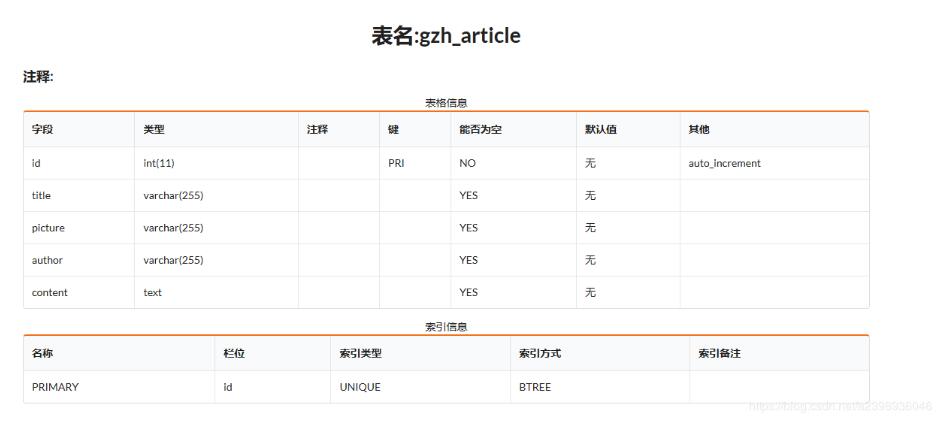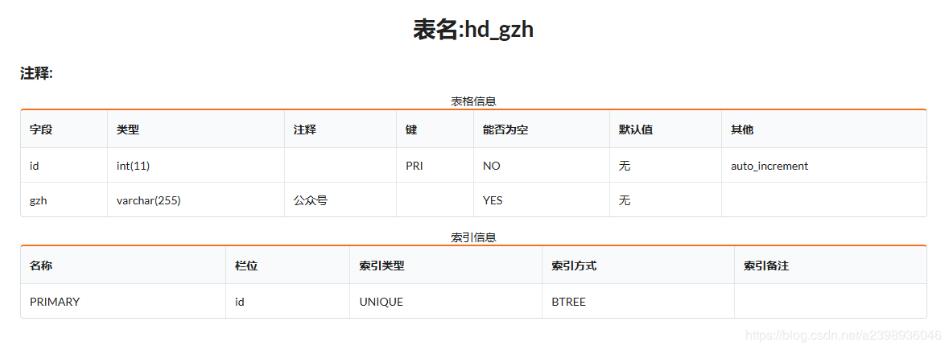初学python,抓取搜狗微信公众号文章存入mysql
mysql表:


代码:
|
1
2
3
4
5
6
7
8
9
10
11
12
13
14
15
16
17
18
19
20
21
22
23
24
25
26
27
28
29
30
31
32
33
34
35
36
37
38
39
40
41
42
43
44
45
46
47
48
49
50
51
52
53
54
55
56
57
58
59
60
61
62
63
64
65
66
67
68
69
70
71
72
73
74
75
76
77
78
79
80
81
82
83
84
85
86
87
88
89
90
91
92
93
94
95
96
97
98
99
100
101
102
|
import requestsimport jsonimport reimport pymysql # 创建连接conn = pymysql.connect(host='你的数据库地址', port=端口, user='用户名', passwd='密码', db='数据库名称', charset='utf8')# 创建游标cursor = conn.cursor()cursor.execute("select * from hd_gzh")effect_row = cursor.fetchall()from bs4 import beautifulsoupsocket.setdefaulttimeout(60)count = 1headers = {'user-agent': 'mozilla/5.0 (windows nt 10.0; win64; x64; rv:65.0) gecko/20100101 firefox/65.0'}#阿布云ip代理暂时不用# proxyhost = "http-cla.abuyun.com"# proxyport = "9030"# # 代理隧道验证信息# proxyuser = "h56761606429t7uc"# proxypass = "9168eb00c4167176"# proxymeta = "http://%(user)s:%(pass)s@%(host)s:%(port)s" % {# "host" : proxyhost,# "port" : proxyport,# "user" : proxyuser,# "pass" : proxypass,# }# proxies = {# "http" : proxymeta,# "https" : proxymeta,# }#查看是否已存在数据def checkdata(name): sql = "select * from gzh_article where title = '%s'" data = (name,) count = cursor.execute(sql % data) conn.commit() if(count!=0): return false else: return true#插入数据def insertdata(title,picture,author,content): sql = "insert into gzh_article (title,picture,author,content) values ('%s', '%s','%s', '%s')" data = (title,picture,author,content) cursor.execute(sql % data) conn.commit() print("插入一条数据") return for row in effect_row: newsurl = 'https://weixin.sogou.com/weixin?type=1&s_from=input&query=' + row[1] + '&ie=utf8&_sug_=n&_sug_type_=' res = requests.get(newsurl,headers=headers) res.encoding = 'utf-8' soup = beautifulsoup(res.text,'html.parser') url = 'https://weixin.sogou.com' + soup.select('.tit a')[0]['href'] res2 = requests.get(url,headers=headers) res2.encoding = 'utf-8' soup2 = beautifulsoup(res2.text,'html.parser') pattern = re.compile(r"url \+= '(.*?)';", re.multiline | re.dotall) script = soup2.find("script") url2 = pattern.search(script.text).group(1) res3 = requests.get(url2,headers=headers) res3.encoding = 'utf-8' soup3 = beautifulsoup(res3.text,'html.parser') print() pattern2 = re.compile(r"var msglist = (.*?);$", re.multiline | re.dotall) script2 = soup3.find("script", text=pattern2) s2 = json.loads(pattern2.search(script2.text).group(1)) #等待10s time.sleep(10) for news in s2["list"]: articleurl = "https://mp.weixin.qq.com"+news["app_msg_ext_info"]["content_url"] articleurl = articleurl.replace('&','&') res4 = requests.get(articleurl,headers=headers) res4.encoding = 'utf-8' soup4 = beautifulsoup(res4.text,'html.parser') if(checkdata(news["app_msg_ext_info"]["title"])): insertdata(news["app_msg_ext_info"]["title"],news["app_msg_ext_info"]["cover"],news["app_msg_ext_info"]["author"],pymysql.escape_string(str(soup4))) count += 1 #等待5s time.sleep(10) for news2 in news["app_msg_ext_info"]["multi_app_msg_item_list"]: articleurl2 = "https://mp.weixin.qq.com"+news2["content_url"] articleurl2 = articleurl2.replace('&','&') res5 = requests.get(articleurl2,headers=headers) res5.encoding = 'utf-8' soup5 = beautifulsoup(res5.text,'html.parser') if(checkdata(news2["title"])): insertdata(news2["title"],news2["cover"],news2["author"],pymysql.escape_string(str(soup5))) count += 1 #等待10s time.sleep(10)cursor.close()conn.close()print("操作完成") |
以上就是本文的全部内容,希望对大家的学习有所帮助,也希望大家多多支持服务器之家。
原文链接:https://blog.csdn.net/a2398936046/article/details/88814078










